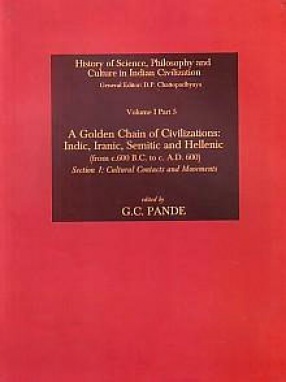Foundations of Indian Culture (In 2 Volumes)
The two volumes together may be described as search for the original ideational foundations of Indian culture. In one way this work recalls the tradition of Coomaraswamy but seeks to join it to the mainstream of critical history. It argues that the living continuity of Indian culture is rooted in a unique spiritual vision and social experience. Indian culture is neither the result of merely accidental happenings through the centuries, nor a mere palimpsest of migrations and invasions. It is, in its essence, a development of foundational ideas constituting a creative matrix. Behind its changing historical forms lies a deep and persistent source of creativity which is spiritual in character. Volume I deals with the spiritual vision and symbolic forms. Here it has been upheld that the spiritual vision of India had two original aspects, the integral or synoptic vision of the Vedas, and the Sramanic vision of transcendence. Purnata and Sunyata constituted the two poles round which Indian spirituality revolved. The author not only elucidates this bipolar matrix of Indian spiritual praxis or sadhana, but also traces its intricate ancient history. He goes on to trace the great symbolic forms--language, myth, science, literature and art--in which this basic vision expressed itself. In all these areas he brings out the basic general principles expressive of inner consciousness rather than present a mere selection of well-known details. Volume II deals with the dimensions of ancient Indian social history. Here it has been maintained that the social awareness of ancient India was characterized by a distinctive perception of geographical space, historical time and human personality. The social bond itself was conceived primarily as an over-arching moral order, not merely as a structure engendered by casual factors belonging to the technical order although these found their rightful place within the larger ethos of the whole. It is in this context of the integral ideational foundations of society that the intricate history of Varna and Jati is sought to be elucidated and the distinctiveness of ancient economic and political ideas and institutions brought out. It is, therefore, a vastly different approach to the social history of India than the one often projected these days.
Get it now and save 10%
BECOME A MEMBER
-

Neurosciences, Consciousness and Philosophy
-

A Golden Chain of Civilizations: Indic, Iranic, Semitic and Hellenic (From c. 600 B.C. to c. A.D. 600): Section 1; Cultural Contacts and Movements
-

A Golden Chain of Civilizations: Indic, Iranic, Semitic and Hellenic (From c. 600 B.C. to c. A.D. 600)
-

A Golden Chain of Civilizations: Indic, Iranic, Semitic and Hellenic (From c. 600 B.C. to c. A.D. 600) (In 2 Volumes)







Bibliographic information